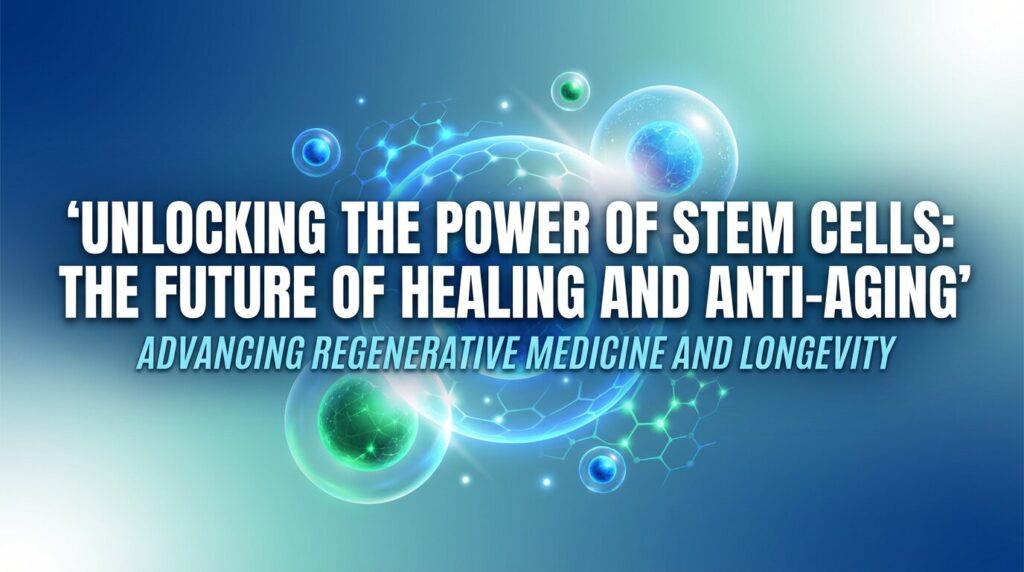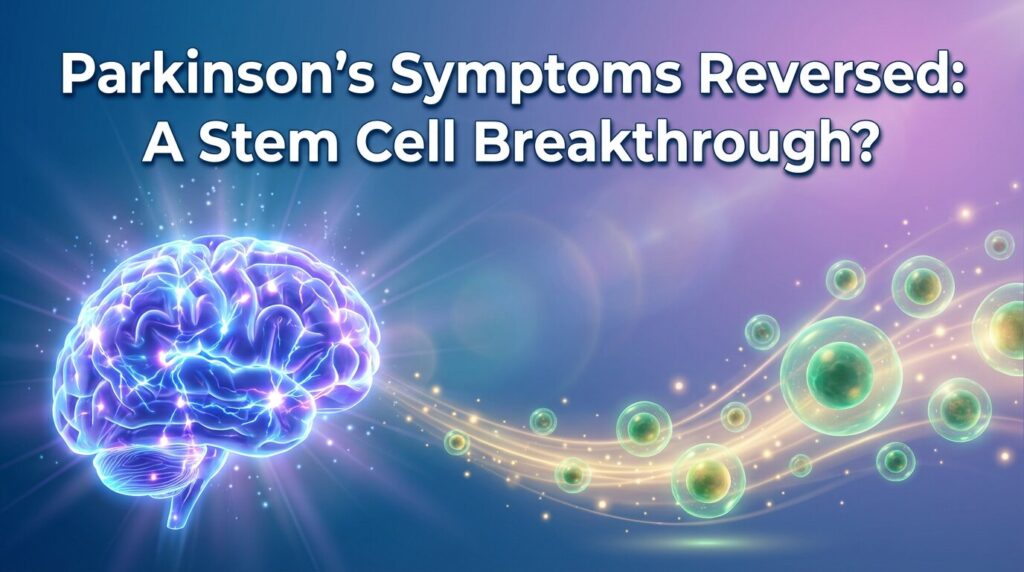Ever wondered if stem cell therapy could be the answer to your health woes?
This cutting-edge treatment has been making waves in the medical field, offering hope to many suffering from various conditions.
But, how do you know if you’re a candidate for stem cell therapy? Let’s dive into this comprehensive guide to find out!
Understanding Stem Cell Therapy
What is Stem Cell Therapy?
Stem cell therapy involves using healthy stem cells to replace or repair damaged tissues in the body. These cells have the remarkable ability to transform into different cell types, making them ideal for treating a wide range of diseases and injuries.
Types of Stem Cell Therapy
There are several types of stem cell therapy, including:
- Autologous Stem Cell Transplant: Uses your own stem cells.
- Allogeneic Stem Cell Transplant: Uses donor stem cells.
- Umbilical Cord Blood Transplant: Uses stem cells from umbilical cord blood.
Each type has its own set of advantages and applications, depending on the condition being treated.
Conditions Treated with Stem Cell Therapy
Stem cell therapy can be used to treat a variety of conditions, including:
- Cancer Treatment: Particularly blood cancers like leukemia and lymphoma.
- Autoimmune Diseases: Such as multiple sclerosis and rheumatoid arthritis.
- Degenerative Diseases: Including Parkinson’s and Alzheimer’s.
- Injuries: Like spinal cord injuries and severe burns.
These are just a few examples. The potential of stem cells is vast and continues to grow with ongoing research.
Success Stories and Advancements
Imagine regaining mobility after a spinal injury or seeing improvements in chronic conditions. These are real possibilities with stem cell therapy. For instance, bone marrow transplants have been life-saving for many cancer patients. As research progresses, the efficacy of stem cell therapies keeps improving, bringing new hope to patients worldwide.
Eligibility Criteria for Stem Cell Therapy
General Health Requirements
Before diving into stem cell therapy, it’s essential to meet specific health criteria. Here’s what you need to know:
- Age Considerations: While there’s no strict age limit, younger patients generally respond better.
- Overall Health Status: Candidates should be in reasonably good health, without severe underlying conditions.
- Pre-existing Medical Conditions: Certain conditions may affect eligibility. A thorough medical evaluation is crucial.
Specific Medical Conditions
Stem cell therapy isn’t a one-size-fits-all solution. It’s most effective for particular conditions. Here’s a closer look:
- Arthritis: Candidates with severe arthritis might find relief through mesenchymal stem cell therapy.
- Spinal Cord Injuries: Patients with spinal cord injuries might regain function.
- Neurodegenerative Diseases: Conditions like Parkinson’s can see significant improvement.
Consultation with Specialists
The journey to qualifying for stem cell therapy begins with consulting a specialist. They’ll review your medical history, conduct diagnostic tests, and assess your suitability for the treatment.
Initial Consultation and Assessment
Importance of a Medical Evaluation
The first step towards stem cell therapy is a comprehensive medical evaluation. This isn’t just a quick check-up; it’s a deep dive into your health status. Why is this so crucial?
- Ensures Safety: Identifies any potential risks.
- Optimizes Success: Tailors the treatment to your specific needs.
What to Expect During the Initial Consultation
Walking into your initial consultation can feel like stepping into the unknown. Here’s a roadmap to ease your mind:
- Medical History Review: Expect a thorough review of your medical history.
- Diagnostic Tests: Blood tests, imaging, and other diagnostics to assess your condition.
- Discussion of Goals: What are you hoping to achieve with stem cell therapy?
Diagnostic Tests and Evaluations
Different conditions require different diagnostics. Here’s what might be on the agenda:
- Blood Tests: To check for markers related to your condition.
- Imaging: MRIs, X-rays, or CT scans to get a detailed view.
- Specialized Tests: Depending on your specific condition.
Reviewing Medical History and Previous Treatments
Your medical history is like a storybook that holds the key to your treatment plan. Previous treatments, surgeries, and outcomes all play a part in shaping your path to stem cell therapy.
Finding a Qualified Stem Cell Therapy Provider
Importance of Selecting a Reputable Provider
Choosing the right provider is half the battle. Why does it matter so much?
- Ensures Quality: High standards of care and expertise.
- Safety: Minimizes risks with experienced practitioners.
Criteria for Choosing a Provider
So, how do you pick the right one? Here are some pointers:
- Accreditation and Certifications: Look for accredited institutions and certified professionals.
- Experience and Expertise: Providers with a track record in stem cell therapy.
- Patient Reviews and Testimonials: Real-life experiences can be incredibly telling.
Questions to Ask Potential Providers
Don’t be shy! Here’s a handy list of questions to get you started:
- How many stem cell therapy procedures have you performed?
- What is your success rate with my specific condition?
- What are the potential risks and side effects?
- How do you handle complications?
Pre-Treatment Requirements
Necessary Medical Tests and Screenings
Before jumping into the treatment, several medical tests and screenings are essential. These might include:
- Blood Tests: To check for infections and overall health.
- Imaging: MRI or CT scans to pinpoint treatment areas.
- Cardiac Evaluation: Ensuring your heart is strong enough for the procedure.
Lifestyle and Dietary Adjustments
Preparing for stem cell therapy isn’t just about medical tests. Your lifestyle and diet play a significant role too:
- Healthy Eating: Focus on a balanced diet rich in vitamins and minerals.
- Exercise: Maintain a moderate exercise routine to keep your body in shape.
- Avoid Alcohol and Smoking: These can negatively affect your treatment’s success.
Pre-Treatment Medications or Supplements
Your doctor might prescribe certain medications or supplements to prepare your body for stem cell therapy. This could include:
- Anti-inflammatory Medications: To reduce any underlying inflammation.
- Vitamins and Supplements: To boost your immune system and overall health.
Psychological Readiness and Expectations Management
Heading into stem cell therapy with the right mindset is crucial. Here’s how to gear up mentally:
- Set Realistic Expectations: Understand what the treatment can and cannot do.
- Mental Preparedness: Prepare for the emotional journey and potential ups and downs.
The Treatment Process
Overview of the Treatment Procedure
Now, let’s get to the heart of the matter: the treatment itself. What can you expect?
- Preparation: Your medical team will prepare you for the procedure.
- Harvesting Stem Cells: This might involve drawing blood or extracting bone marrow.
- Injection or Infusion: The harvested stem cells are then injected or infused into the targeted area.
Preparation for the Procedure
Getting ready for the procedure is a multi-step process:
- Fasting: You might need to fast before the procedure.
- Pre-Medications: Certain medications may be administered beforehand.
- Relaxation Techniques: Breathing exercises or meditation to calm your nerves.
What Happens During the Therapy Session
Here’s a step-by-step breakdown of a typical stem cell therapy session:
- Positioning: You’ll be positioned comfortably, depending on the treatment area.
- Local Anesthesia: The area might be numbed to reduce discomfort.
- Stem Cell Injection/Infusion: The stem cells are carefully administered.
- Monitoring: Your vital signs are monitored throughout the procedure.
Post-Treatment Care and Follow-Up Appointments
The journey doesn’t end once the treatment is over. Post-care is crucial for success:
- Rest and Recovery: Give your body time to heal.
- Follow-Up Appointments: Regular check-ins to monitor progress.
- Physical Therapy: If needed, to help with recovery and rehabilitation.
Risks and Considerations
Potential Risks and Side Effects
Like any medical procedure, stem cell therapy comes with its risks and side effects:
- Infection: Although rare, infections can occur at the injection site.
- Immune Reactions: Your body might react to the new stem cells.
- Pain and Discomfort: Some pain or discomfort at the injection site.
Managing Expectations and Understanding Realistic Outcomes
It’s essential to go into stem cell therapy with your eyes wide open:
- Realistic Goals: Understand that results can vary from person to person.
- Time Frame: Healing and improvements might take time.
Ethical and Legal Considerations
Stem cell therapy is a rapidly evolving field with its ethical and legal nuances:
- Regulations: Ensure your provider follows all relevant guidelines and regulations.
- Informed Consent: Make sure you understand the procedure fully and consent to it.
Cost and Insurance
Breakdown of Costs Involved in Stem Cell Therapy
Stem cell therapy can be pricey. Here’s a rough breakdown:
- Initial Consultation and Diagnostic Tests: Can range from a few hundred to several thousand dollars.
- Procedure Costs: Typically range from $5,000 to $50,000, depending on the complexity and type of stem cell therapy.
- Post-Treatment Care: Additional costs for follow-up appointments and rehabilitation.
Insurance Coverage and Reimbursement Options
Navigating insurance can be tricky. Here’s what you need to know:
- Insurance Coverage: Not all insurance plans cover stem cell therapy. Check with your provider.
- Reimbursement Options: Some clinics offer payment plans or financial assistance.
Financial Assistance Programs and Payment Plans
Don’t let the cost deter you. Explore these options:
- Financial Aid: Some clinics provide financial aid to eligible patients.
- Payment Plans: Spread out the cost over several months or years.
- Grants and Scholarships: Look for grants and scholarships specifically for medical treatments.
Success Rates and Long-Term Outcomes
Success Rates of Various Stem Cell Treatments
Success rates can vary widely:
- Bone Marrow Transplants: Generally high success rates for treating blood cancers.
- Arthritis Treatments: Many patients report significant pain relief and improved mobility.
- Neurodegenerative Diseases: Mixed results, but ongoing research shows promise.
Factors Influencing Treatment Success
Several factors can influence the success of stem cell therapy:
- Patient Health: Overall health and fitness can impact outcomes.
- Condition Severity: More severe conditions might require more intensive treatments.
- Adherence to Post-Treatment Care: Following your doctor’s advice post-treatment is crucial.
Long-Term Outcomes and Ongoing Research
Stem cell therapy is a field in flux, with new developments emerging regularly:
- Long-Term Benefits: Many patients experience long-lasting relief.
- Ongoing Research: Research continues to explore new applications and improve existing treatments.
Conclusion
In a nutshell, qualifying for stem cell therapy involves a thorough evaluation of your health, finding the right provider, and preparing yourself mentally and physically for the journey.
It’s a promising field with potential benefits that could significantly improve your quality of life. Consult with medical professionals to see if this treatment is right for you, and embrace the possibilities that stem cell therapy offers.



